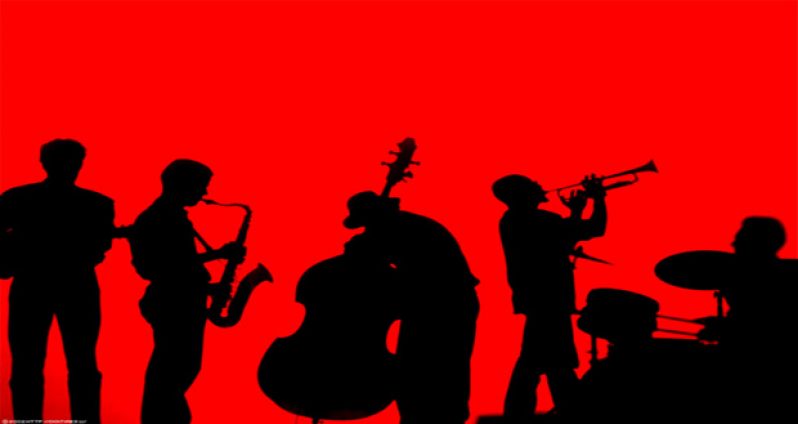EVEN though black and white musicians were collaborating more in the late 1920s and early 1930s, black musicians were having blatant racial problems. It is important to acknowledge the advantage enjoyed by white musicians during this era. Unlike black band leaders, white musicians were accepted by mainstream America; they were not forced to suffer the indignities of racism that even the finest black musicians faced on a regular basis.
Often, black musicians found their work “borrowed” by others, whether in acknowledged “cover” versions or stolen outright, a process that had become quite familiar to Fletcher Henderson and many more African-American jazz artistes.
UPS-AND-DOWNS
It was ups-and-downs music as black players tried to resist the intentions of the hierarchy to conscript the music as their own. In the meantime, as a category of entertainment, jazz had begun to occupy a wider and wider orbit of entertainment, encompassing a broad spectrum of popular culture.
The most unfortunate thing about the music during this so-called “Jazz Age” was the exposing of white musicians who were piggy-backing on black musicians to make their mark. As one commentator pointed out, “It seems almost anything in fashion would sooner or later be classified as jazz.”
The white mainstream media, which had earlier given this music the cold shoulder, was all for it now. Of course, this sudden interest was because white musicians, and as Holloywood, were becoming involved in a large way.
With so many collaborations taking place at the same time, the music had lost some of its flavour; it had lost the “gut-bucket sound” that was commonly associated with black musicians.
The 1927 talking movie, “The Jazz Singer” had George Gershwin playing popular music, and calling it jazz. Paul Whiteman, another society musician, was dubbed the ostensible “King of Jazz”. These two great musicians played music that they called jazz, which was not even close to authentic jazz music.
The end of ‘prohibition’ in 1933 created another transformation: Booze became legal; the radio or wireless began carrying music into households; and ‘speakeasies’ became legitimate nightclubs, which inevitably made the music pie much smaller. White musicians playing any popular music and calling it jazz were enjoying the spoils of their labour.
ENTER BENNY GOODMAN
It was at this time that Benny Goodman stepped onto the scene. Born in Eastern Europe, he came to Chicago in 1902. At the time, Chicago was experiencing a great period in jazz. Goodman, a young clarinetist, was serving his apprenticeship under Frank Schoepp, a former member of the Chicago Musical College. Loving the music and constantly at practise, Goodman came of age in a maelstrom of musical activities, including nightclubs and dancehalls. Early in his career, he had refused to play the popular music. He’d claimed that he was more interested in what the more progressive black bands were putting out.
He was listening to Fletcher Henderson at the Roseland Ballroom, and Duke Ellington at the Cotton Club in Harlem. According to him, he even took music from society bandleaders like Gershwin and Whiteman. To his credit, Goodman did much to help black musicians who were treated as musical underclass. He used his contacts to break many barriers of racial prejudice, class distinction, snobbery, and close-mindedness, which he claimed “only served to justify and compartmentalise the creative spirit.”
THE YALE DROPOUT
John Hammond, a Yale dropout and a member of the wealthy Vanderbilt family, became friends with Goodman, and laid a very good impression on him. He was a philanthropist, and his life was a career of advocacy for jazz music and civil rights. His was a relentless task of prodding for authentic jazz in the face of the watered down imitations.
His relentless prodding forced Goodman to rearrange his thinking. He immediately plunged into the type of music that earned him the sobriquet, “King of Swing.”
This achievement was in collaboration with Fletcher Henderson as an arranger; it was cited as the major turning point in the evolution of the band’s sound. Henderson, a former bandleader, had a treasure trove of material composed when he was a bandleader. His impact was great; even decisive in the band’s success. The arrangements by Henderson were the source of many memorable Goodmans music, the likes of “King Porter Stomp”, “Sometimes I’m Happy”, “Blue Skies”, and “Christopher Columbus”.
In the racially-charged atmosphere of the day, the appearance of Henderson loomed larger than the music. Many jazz enthusiasts enjoyed Goodman’s music, now that he was consciously emulating the faster music of Henderson.
Goodman, however, was castigated by other white musicians. They claimed that he was building his personal success by exploiting the achievements of black innovators. Some enthusiasts and critics alike ignored the social ramifications of the collaboration, and concentrated on the important nexus in the history of jazz.
By Milton Bruce



.jpg)








